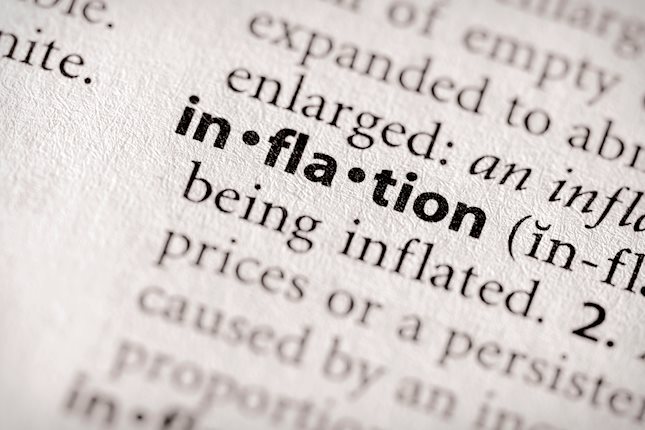- The DXY Index recorded losses in Wednesday’s session, falling toward 104.70.
- Investors are taking profits from Tuesday’s rally following CPI.
- Focus now shifts to Retail and PPI data from January.
The US Dollar (USD) measured by the Dollar Index (DXY) experienced a dip on Wednesday as it declined near 104.70. This downward trajectory is primarily attributed to investors securing gains following the Greenback’s rally on Tuesday following January CPI results showing stubborn inflation. This fueled a recalibration of the Federal Reserve's (Fed) rate easing expectations. For the remainder of the week, markets will eye the Producer Price Index (PPI) and Retail Sales to continue placing their bets on the next Fed decisions.
There is a growing market consensus that the Fed is unlikely to cut rates in the near term, supported by hot inflation data releases and cautious Fed officials. This adjustment in easing expectations will likely lend further strength to the USD after this consolidation. As for now, markets are delaying their prediction of the start of the easing cycle to June.
Daily digest market movers: US Dollar takes a breather to consolidate CPI gains
- No relevant reports were released by the US during the session.
- On Friday, the US will release January’s Retail Sales and Producer Price Index figures, which may provide additional volatility to the USD.
- US Treasury bond yields also consolidated. Current rates place the 2-year yield at 4.56%, the 5-year yield at 4.22%, and the 10-year yield at 4.25%, which made the US Dollar struggle to find demand on Wednesday
- According to the CME FedWatch Tool, the odds of a cut at the May meeting have significantly declined, and markets are now pushing the start of the easing cycle to June. A hold at the March meeting is now the mainstream view.
Technical analysis: DXY bull’s momentum eases, but buyers are still in control
The Relative Strength Index (RSI) on the daily chart reflects a negative slope in positive territory. The dip in the RSI, typified by declining momentum, is indicative of reduced buying strength, which can be considered a potential sign of selling pressure. Simultaneously, the Moving Average Convergence Divergence (MACD) histogram shows flat green bars. Normally, this flat alignment would suggest a balanced state between buyers and sellers in the short term fueled by the profit-taking action of the bulls.
Despite these signals, the stronger indicator here appears to be the positioning above the 20, 100 and 200-day Simple Moving Averages (SMAs). This suggests that the overall trend remains bullish and that buyers are dominating the market in the longer term despite a potential short-term reversal.
Overall, although some pullback may be expected due to profit-taking in the short term, as reflected by the negative slope of the RSI and a flat MACD, the overall bullish trend seems to be intact with bulls maintaining substantial control.
Canadian Dollar FAQs
What key factors drive the Canadian Dollar?
The key factors driving the Canadian Dollar (CAD) are the level of interest rates set by the Bank of Canada (BoC), the price of Oil, Canada’s largest export, the health of its economy, inflation and the Trade Balance, which is the difference between the value of Canada’s exports versus its imports. Other factors include market sentiment – whether investors are taking on more risky assets (risk-on) or seeking safe-havens (risk-off) – with risk-on being CAD-positive. As its largest trading partner, the health of the US economy is also a key factor influencing the Canadian Dollar.
How do the decisions of the Bank of Canada impact the Canadian Dollar?
The Bank of Canada (BoC) has a significant influence on the Canadian Dollar by setting the level of interest rates that banks can lend to one another. This influences the level of interest rates for everyone. The main goal of the BoC is to maintain inflation at 1-3% by adjusting interest rates up or down. Relatively higher interest rates tend to be positive for the CAD. The Bank of Canada can also use quantitative easing and tightening to influence credit conditions, with the former CAD-negative and the latter CAD-positive.
How does the price of Oil impact the Canadian Dollar?
The price of Oil is a key factor impacting the value of the Canadian Dollar. Petroleum is Canada’s biggest export, so Oil price tends to have an immediate impact on the CAD value. Generally, if Oil price rises CAD also goes up, as aggregate demand for the currency increases. The opposite is the case if the price of Oil falls. Higher Oil prices also tend to result in a greater likelihood of a positive Trade Balance, which is also supportive of the CAD.
How does inflation data impact the value of the Canadian Dollar?
While inflation had always traditionally been thought of as a negative factor for a currency since it lowers the value of money, the opposite has actually been the case in modern times with the relaxation of cross-border capital controls. Higher inflation tends to lead central banks to put up interest rates which attracts more capital inflows from global investors seeking a lucrative place to keep their money. This increases demand for the local currency, which in Canada’s case is the Canadian Dollar.
How does economic data influence the value of the Canadian Dollar?
Macroeconomic data releases gauge the health of the economy and can have an impact on the Canadian Dollar. Indicators such as GDP, Manufacturing and Services PMIs, employment, and consumer sentiment surveys can all influence the direction of the CAD. A strong economy is good for the Canadian Dollar. Not only does it attract more foreign investment but it may encourage the Bank of Canada to put up interest rates, leading to a stronger currency. If economic data is weak, however, the CAD is likely to fall.
Information on these pages contains forward-looking statements that involve risks and uncertainties. Markets and instruments profiled on this page are for informational purposes only and should not in any way come across as a recommendation to buy or sell in these assets. You should do your own thorough research before making any investment decisions. FXStreet does not in any way guarantee that this information is free from mistakes, errors, or material misstatements. It also does not guarantee that this information is of a timely nature. Investing in Open Markets involves a great deal of risk, including the loss of all or a portion of your investment, as well as emotional distress. All risks, losses and costs associated with investing, including total loss of principal, are your responsibility. The views and opinions expressed in this article are those of the authors and do not necessarily reflect the official policy or position of FXStreet nor its advertisers. The author will not be held responsible for information that is found at the end of links posted on this page.
If not otherwise explicitly mentioned in the body of the article, at the time of writing, the author has no position in any stock mentioned in this article and no business relationship with any company mentioned. The author has not received compensation for writing this article, other than from FXStreet.
FXStreet and the author do not provide personalized recommendations. The author makes no representations as to the accuracy, completeness, or suitability of this information. FXStreet and the author will not be liable for any errors, omissions or any losses, injuries or damages arising from this information and its display or use. Errors and omissions excepted.
The author and FXStreet are not registered investment advisors and nothing in this article is intended to be investment advice.
Recommended content
Editors’ Picks

EUR/USD trades deep in red below 1.0300 after strong US jobs report
EUR/USD stays under bearish pressure and trades below 1.0300 in the American session on Friday. The US Dollar benefits from the upbeat jobs report, which showed an increase of 256,000 in Nonfarm Payrolls, and forces the pair to stay on the back foot heading into the weekend.

GBP/USD drops toward 1.2200 on broad USD demand
GBP/USD extends its weekly slide and trades at its weakest level since November 2023 below 1.2250. The data from the US showed that Nonfarm Payrolls rose by 256,000 in December, fuelling a US Dollar rally and weighing on the pair.

Gold ignores upbeat US data, approaches $2,700
Following a drop toward $2,660 with the immediate reaction to strong US employment data for December, Gold regained its traction and climbed towards $2,700. The risk-averse market atmosphere seems to be supporting XAU/USD despite renewed USD strength.

Sui bulls eyes for a new all-time high of $6.35
Sui price recovers most of its weekly losses and trades around $5.06 at the time of writing on Friday. On-chain metrics hint at a rally ahead as SUI’s long-to-short ratio reaches the highest level in over a month, and open interest is also rising.

Think ahead: Mixed inflation data
Core CPI data from the US next week could ease concerns about prolonged elevated inflation while in Central and Eastern Europe, inflation readings look set to remain high.

Best Forex Brokers with Low Spreads
VERIFIED Low spreads are crucial for reducing trading costs. Explore top Forex brokers offering competitive spreads and high leverage. Compare options for EUR/USD, GBP/USD, USD/JPY, and Gold.